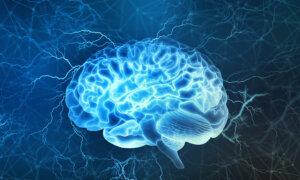A diary that never fades; that’s essentially what our brains are, thanks to a newly discovered molecular glue called KIBRA.
Scientists have discovered how this protein, along with its partner protein kinase M-zeta (PKMzeta), keeps our memories intact for decades—even as our brain cells continuously regenerate.
How Our Brains Hold Onto Memories for Decades
Memories are stored in the brain through synapses, connections between neurons that strengthen with frequent signaling. These synapses form intricate neural networks responsible for encoding and retrieving information, allowing us to navigate daily life and shape our identities.However, the molecules within synapses undergo constant renewal every few hours to days, raising the question: How do the memories encoded in these connections remain stable for decades?
The study uncovered KIBRA’s role as a “persistent synaptic tag” or glue, selectively attaching to strong synaptic connections and coupling with PKMzeta to preserve them. This targeting and tagging mechanism helps to stabilize specific neural connections that receive strong signals, ensuring that particular memories are stored for long-term retrieval while others fade away.
The strength of these signals during learning, along with processes involving KIBRA and PKMzeta, determines which memories are considered essential and stored based on how active the brain is and how meaningful the information is at the time, the researchers noted.
When a memory forms, “the synapses involved in the formation are activated—and KIBRA is selectively positioned in these synapses,” Dr. Todd Sacktor, co-author of the study and professor of pharmacology and neurology at State University of New York (SUNY) Downstate Health Sciences University, said in a statement.
Scientists Erase Memories in Mice
When researchers disrupted the bonds between KIBRA and PKMzeta in the brain, it affected the mice’s ability to retain spatial memories as tested through behavioral tasks. This demonstrates that these molecular interactions are vital for preserving certain types of long-term memories in the brain.Echoes of Sir Francis Crick’s Theory
The team’s discovery validates Sir Francis Crick’s 1984 hypothesis that molecular interactions in the brain sustain memories. Crick, a renowned British molecular biologist who co-discovered DNA’s double-helix structure in 1953, proposed this visionary concept. This idea compares memory’s resilience to the Ship of Theseus from Greek mythology. The Ship of Theseus, also known as Theseus’s Paradox, is a famous thought experiment that asks: If you replace every part of something over time, is it still the same thing?Just as the ship persists by replacing its planks over time, memory endures despite constant molecular changes.
According to Dr. Sacktor, this allows memories to last for years even as the proteins maintaining them are replaced.
“A firmer understanding of how we keep our memories will help guide efforts to illuminate and address memory-related afflictions in the future,” he said.







